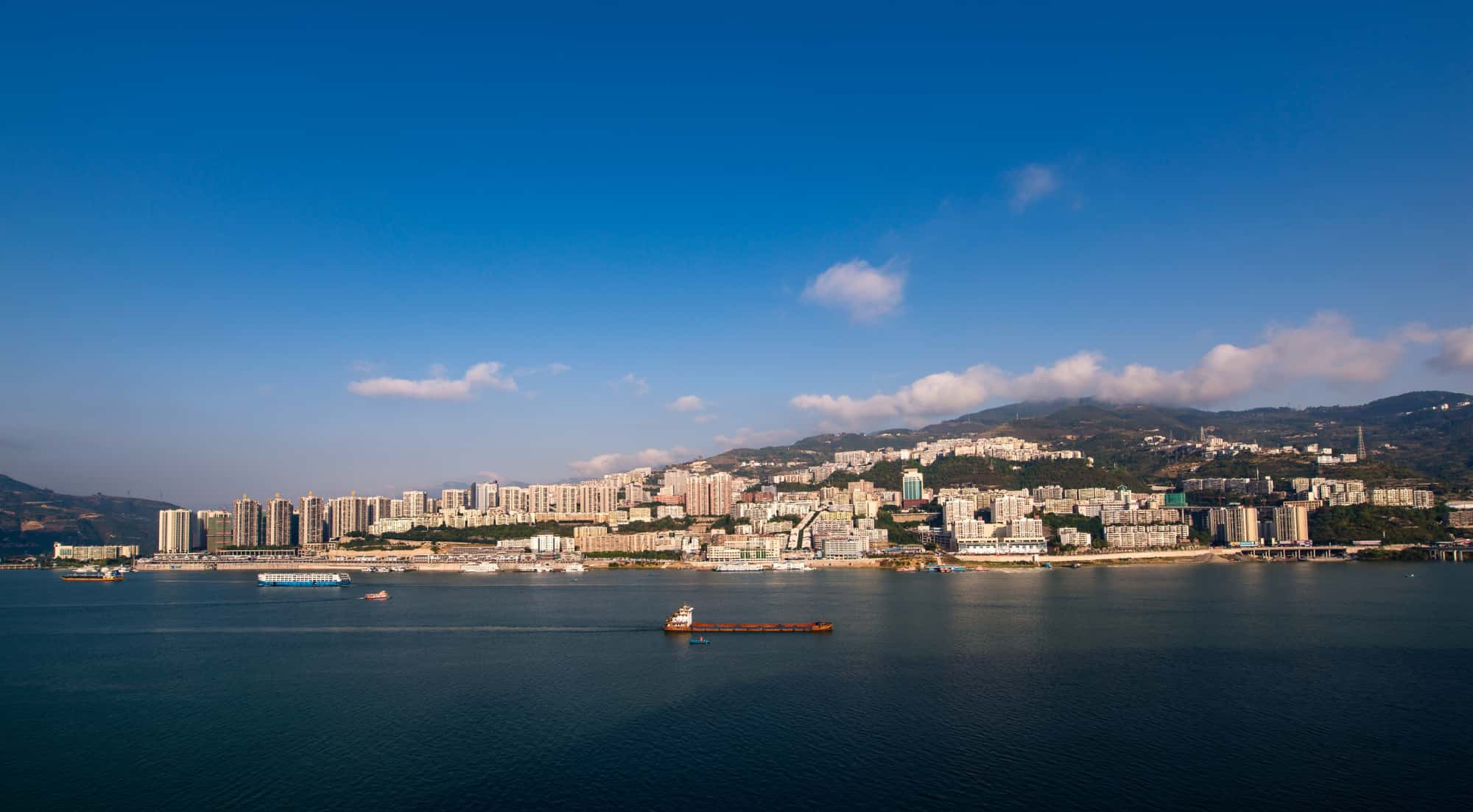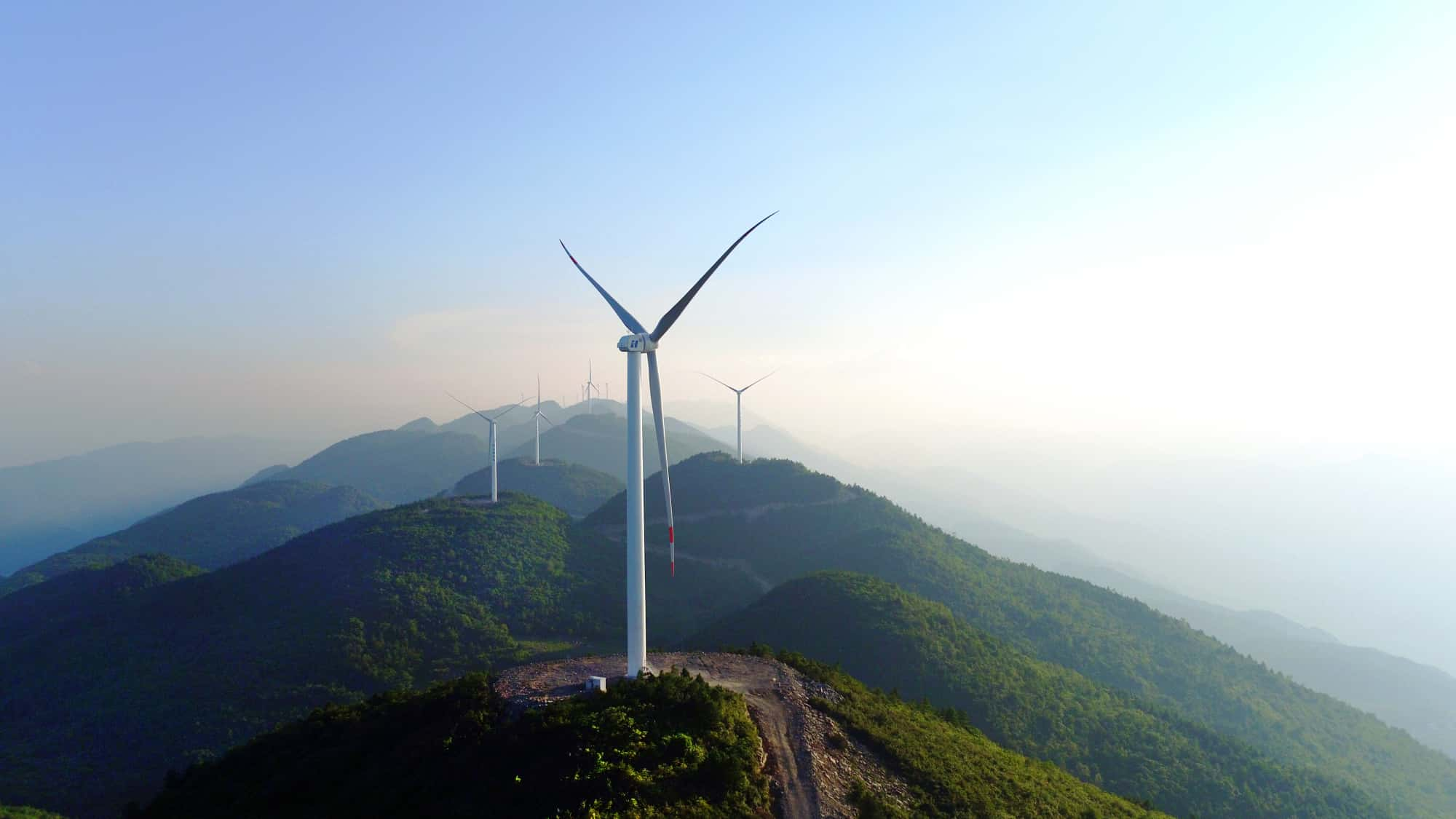 Bridging News
Bridging News
Fengjie County's Transformation: Green Energy, Cultural Tourism, and Agricultural Prosperity
Chongqing - On August 15, a press conference enhancing high-quality development focused on Fengjie County was held in Chongqing. This press conference showcased Fengjie's remarkable achievements in high-quality development, its progress in building a cultural tourism hub, and advancements in the navel orange industry.
As a pivotal region in the Three Gorges Reservoir Area, Fengjie County is rapidly transforming and upgrading, leveraging its unique natural conditions and resource advantages to assume a more prominent role in the new era's economic and social development.

The new skyline of the Poetry City. (Photo/Wang Chuangui)
High-quality development
Situated in the Three Gorges Reservoir Region and acclaimed as the "Poetry City of China," Fengjie County has faced limitations in traditional industrial development due to its distinctive geographical environment. To overcome these challenges, Fengjie is aligning with the city's "33618" modern manufacturing cluster system, capitalizing on its comparative advantages, focusing on investment attraction, and fostering the integration of clean energy with ecological industries.

Wind turbines on Fengjie's mountain ridges drive sustainable energy. (Photo/Fengjie County)
In the realm of clean energy, Fengjie County is harnessing its abundant water, wind, and solar resources to drive the growth of the green energy sector. Notably, the Chongqing Fengjie Jinfeng Wind Farm, located approximately 2,000 meters above sea level, is poised to become Chongqing's largest wind power facility upon completion. Beyond wind energy, Fengjie is advancing the integrated development of wind, solar, and hydropower, with several projects underway. By 2027, these initiatives will generate an annual output value of 5 billion yuan.
Cultural tourism city
Fengjie County, celebrated as the "Poetry City of China," boasts a rich tapestry of historical and cultural heritage. Recently, the county has been committed to merging culture with tourism to establish a modern cultural tourism city, capitalizing on its extensive historical resources and distinctive natural beauty.

Baidi City in all its autumn glory. (Photo/Jin Chun)
At the heart of this effort is the Qutang Gorge, as Fengjie County advances the development of the Yangtze River Three Gorges International Golden Tourism Belt core area and aims to become a world-class tourist destination. Renowned for its breathtaking natural scenery and profound cultural significance, Qutang Gorge is central to Fengjie's strategy. The county is actively developing Three Gorges tour routes, enhancing premium scenic sites, and establishing the Xinglong National Tourism Resort alongside several rural tourism demonstration areas, striving to craft a multifaceted and comprehensive tourism destination.

Red leaves adorn the majestic Kuimen Gate in Qutang Gorge. (Photo/Wang Chuangui)
Moreover, Fengjie County is focusing on cultivating cultural intellectual property (IP) through initiatives such as international poetry festivals, publishing poetry classics, and collaborating with cultural programs to further elevate the Poetry City's cultural prominence. To enhance the visitor experience, Fengjie has introduced six major tourism attractions, including driving tours, eco-health, exploring the Poetry City, folk cuisine, scientific research, and competitive sports, and is dedicated to creating new highlights within the all-region tourism sector.
Navel orange industry
Benefiting from rich natural resources and unique climatic conditions, Fengjie County has become a leading navel orange production area in China. The navel orange industry serves as a cornerstone of Fengjie's economy, driving rural revitalization and increasing farmers' incomes.

Advanced processing at a Fengjie navel orange factory, ensuring quality from harvest to market. (Photo/Fengjie County)
Fengjie County has 375,000 mu (about 25,000 hectares) dedicated to navel orange cultivation, with an expected production of 481,000 tons this year. By extending the industrial chain and enhancing value-added processes, Fengjie fosters the growth of food and agricultural product processing industries. For instance, Beijing Huiyuan Group has invested 3 billion yuan (411 million US dollars) to build a fruit and vegetable fresh processing industrial park in Fengjie, projected to achieve an annual output value of 2 billion yuan upon reaching full production. Additionally, Fengjie is developing niche industries such as meat rabbit farming and Chinese medicinal herb cultivation, leveraging innovation and technology to boost industry competitiveness and promote high-quality agricultural development.
 Related Stories
Related Stories